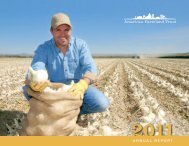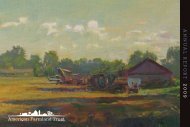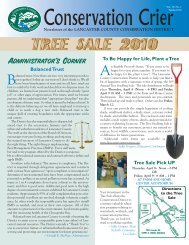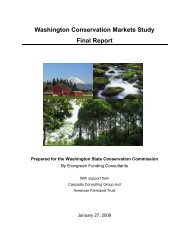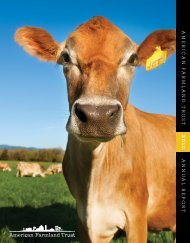Farms for the Future: Massachusetts - American Farmland Trust
Farms for the Future: Massachusetts - American Farmland Trust
Farms for the Future: Massachusetts - American Farmland Trust
Create successful ePaper yourself
Turn your PDF publications into a flip-book with our unique Google optimized e-Paper software.
CHAPTER THREEAgriculture Preservation Restriction ProgramThe Agricultural Preservation Restriction (APR) Program, authorized under <strong>Massachusetts</strong> General LawsChapter 20 Sections 23-26 and administered by <strong>the</strong> MDAR, is <strong>the</strong> Commonwealth’s primary farmlandprotection program. The APR program is voluntary, with a rolling application process. A landownerinterested in protecting his or her farmland submits a program application, which is scored on <strong>the</strong> basisof a number of parcel and community criteria; <strong>the</strong> land is appraised; and <strong>the</strong> application is <strong>the</strong>n ei<strong>the</strong>rapproved or disapproved. If approved, <strong>the</strong> Commonwealth pays <strong>the</strong> landowner up to <strong>the</strong> differencebetween <strong>the</strong> “fair market value” and <strong>the</strong> “agricultural value” of <strong>the</strong> farmland in exchange <strong>for</strong> a permanentdeed restriction that precludes any use of <strong>the</strong> land that would have a negative impact on itsagricultural viability.Since its first purchase in 1980, <strong>the</strong> APR program has permanently protected 61,855 acres of <strong>the</strong> state’smost productive farmland at a cost to <strong>the</strong> Commonwealth of $172.5 million. 23Number of farmland parcelsprotected through <strong>the</strong> APR programthrough fiscal year 2007Number of parcelsby town01–56–1516–52Source: <strong>Massachusetts</strong> Department of Agricultural Resources, 2007Program SpendingAs <strong>the</strong> chart on page 10 indicates, APR programspending has stayed relatively constant over <strong>the</strong>past 10 years, with a few notable exceptions.These include a $2.4 million jump in state spendingon <strong>the</strong> program in fiscal year 2008, <strong>the</strong> firstyear of capital spending decisions by <strong>the</strong> Patrickadministration. The fiscal year 2008 funding wasaugmented by an additional $2.6 million from <strong>the</strong>federal Farm and Ranch Lands Protection Program(FRPP), <strong>for</strong> a total investment in <strong>the</strong> program of$12.6 million. Since <strong>the</strong> program’s inception,annual spending has averaged $6.9 million <strong>for</strong>land acquisition and associated costs. 24The Environmental Bond bill enacted in <strong>the</strong>summer of 2008 provides a significant increase inbond authority <strong>for</strong> <strong>the</strong> program over <strong>the</strong> next fiveyears. Compared to <strong>the</strong> $48 million authorizedthrough <strong>the</strong> 2002 bond bill and a 2007 “patch”bond, <strong>the</strong> 2008 Environmental Bond provides$67.75 million <strong>for</strong> <strong>the</strong> program—an annualaverage of $13.55 million.Program DemandDemand <strong>for</strong> <strong>the</strong> APR program has consistentlyoutpaced available funding. Thanks to <strong>the</strong> fiscalyear 2008 increase in program spending, <strong>the</strong> program“queue” is smaller than it has been in yearsand program applications are on <strong>the</strong> rise. As ofOctober 2008, <strong>the</strong> program had 14 approved or“final voted” projects representing 913 acres;<strong>the</strong>se projects had a total estimated restrictionvalue of $8.1 million. An additional 58 projectsrepresent 4,934 acres that have been nominated<strong>for</strong> appraisals. 25<strong>American</strong> <strong>Farmland</strong> <strong>Trust</strong>7


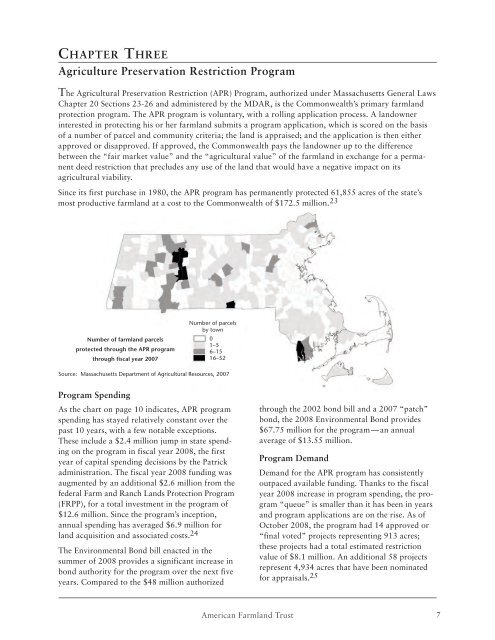
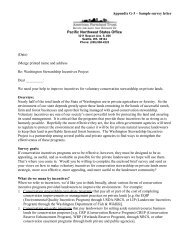

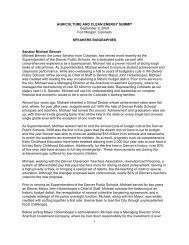
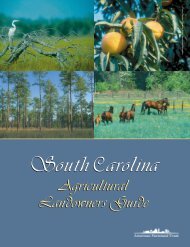
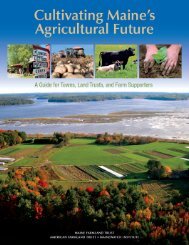
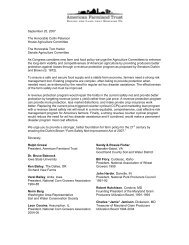
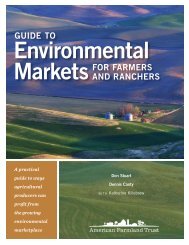
![Farmland by the Numbers [PDF] - American Farmland Trust](https://img.yumpu.com/31549391/1/190x245/farmland-by-the-numbers-pdf-american-farmland-trust.jpg?quality=85)
